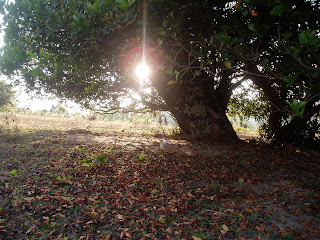I came to know of my friend S. A. Hussain's demise while on a field trip yesterday. It took a while for the news to sink in. As I was travelling down to Tirthahalli from Hosanagara, it began to hit me. I would never hear his jolly voice over the phone again, never hear that hearty laugh again... In the last 10-odd years that I have been in Manipal, he has been a friend, mentor and guide, ever available for advice and I can't remember a single occasion where he failed to cheer me up when I was down.
I met him for the first time at the Mangalore railway station, where both of us had come to greet a common friend - J-P Puyravaud, who was arriving from Pondicherry to deliver a lecture at my institute. I don't know how we became friends, but in no time we were calling each other regularly and meeting up whenever Hussain Sa'ab was passing by Manipal. I worked out the design for eco-tourism facilities for Harike Lake in Punjab for him, though finally the project did not see light of day. Later we collaborated on the project to rejuvenate Anekere Lake at Karkal.
Through it all, I developed tremendous respect for a man who lived life on his own terms, had great love and affection for friends and humanity in general and could teach you a lot without seeming preachy. I still remember an incident when we were inspecting a farm-house in Jarkal as a model for our Harike project. The owner, whom Hussain Sa'ab knew, was away and we were moving around in the property when two of the guard dogs rushed us, snarling ferociously. While I was terrified, Hussain told me in a low, confident voice not to run, but to stand my ground and not look them directly in the eye. Sure enough, the dogs stopped just short of us, growling. Slowly, they sniffed us over, then decided that we were ok! They didn't trouble us after that, but my heartbeat rate was a lot faster than prescribed!
On another occasion, he demonstrated his sharp understanding of bird behaviour - by slapping his thighs to imitate the display of dominance among cocks by flapping their wings. The cock in question immediately perked up and started flapping its wings and crowing, trying to intimidate its unseen rival. I remember that he could also do a good imitation of the call of a langur.
I last met him about a month ago, when he dropped by with his nephew. I had been waxing eloquent about a new fish joint at Manipal and he wanted to test it out. We had a nice lunch together, with prawns and anjal fry and we parted happy. There were plans afoot that Hussain Sa'ab, Shiva and I would go to Sikkim in February, where he would stay at the forest rest houses we were to camp in, while Shiva and I would go trekking.
Once when I was particularly depressed with the happenings at work, I had told him that I was considering quitting. "Don't you go off without telling me," he'd admonished me. And now he has gone off without telling me... There is a recollection I have about a conversation we had long ago about migratory birds during one of his visits. I remember him saying that he once spent some time with some American who was studying bird migration. He said that, unlike most of our perceptions, most bird migrations don't happen in large groups. The American had found that a large number of migratory birds travel singly and at night, from his studies using radar. Intriguingly, he found large numbers of birds that travel in the reverse direction too. This piece of information, though it didn't strike me as remarkable then, started fascinating me later. I always meant to follow it up with him sometime, maybe work it into a story that I was planning... Somehow, that didn't happen, there was too much for us to discuss whenever we met. And now, sadly, it will never happen.
Goodbye Sir, dear Hussain Sa'ab... I will miss you badly. May your soul rest in peace. I am sure that whichever heaven you find yourself in, there will be plenty of your feathered friends to keep you busy!

















































